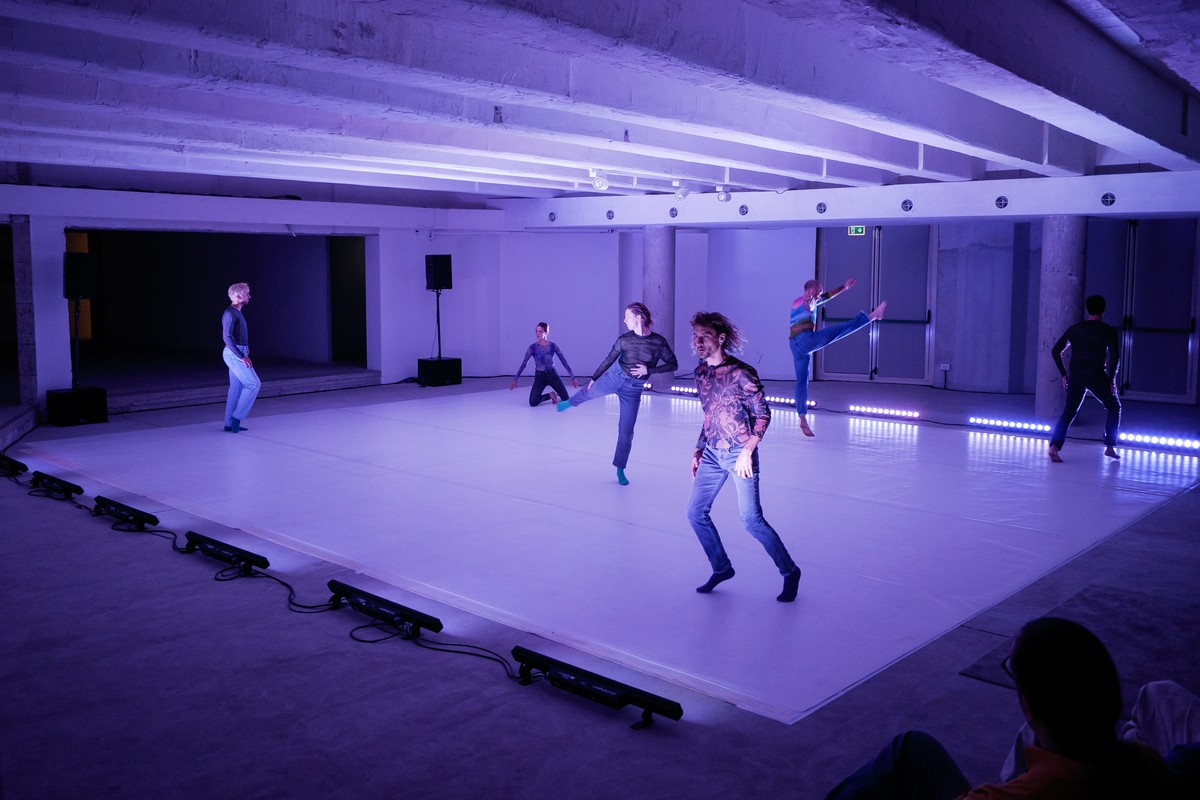
PLAY/Michèle Murray, WILDER SHORES
Fondazione Nicola Del Roscio, Rome
Ph. Livio Sapio

PLAY/Michèle Murray, WILDER SHORES
Fondazione Nicola Del Roscio, Rome
Ph. Livio Sapio
For the title of the painting Wilder Shores of Love (1985), Cy Twombly was inspired by the book of the English writer Lesley Blanch, The Wilder Shores of Love (1954). In turn the choreographer Michèle Murray draws inspiration from the title of the work to describe through her choreography WILDER SHORES (2020) the concepts of energy, time and space that belong to dancing and to the ‘instant composition’ process that characterizes the choreographer’s works.
Murray's method consists of giving the dancers basic parameters – the type of movements, the times, the spaces within which to move, the rules for interaction – to be used as a starting point for developing their own personal choreography. From their combination, the entire choreographic composition comes to life.
This is how WILDER SHORES interacts with the work of Cy Twombly, also recovering the concept of interaction between past and present: it makes use of some figures from classical ballet and some of the choreographic principles dear to Merce Cunningham, yet reshaping them according to a contemporary choreographic approach.
PLAY/Michèle Murray
WILDER SHORES
Fondazione Nicola Del Roscio, Rome
June 22 2024
Artistic Direction, Concept: Michèle Murray
Artistic Collaboration: Maya Brosch
Performers
Alexandre Bachelard, Léo Gras, Vivien Kovarbasic, Baptiste Menard, Manuel Molino, Léa Vinette
Music: Gerome Nox
Lights: Catherine Noden
Technical Assistant: Sylvie Califano
Video: Antonio Demma
ede (Eleonora Di Erasmo) – I would like to start our conversation focusing on the title of one of the well-known paintings by Cy Twombly made in 1985, Wilder Shores of Love. The artist took inspiration for the title from a book by the English writer Lesley Blanch, The Wilder Shores of Love (1954). The book traces the biographies of four women who, for various reasons, flee the dull conventions of 19th-century Europe to set out on a journey to the Middle East, where they find in love a means of individual expression, liberation and fulfillment. The full-bodied brushstrokes of oil paint overlapping one another to create decisive shades of color, the perceptible physicality of the gesture accompanying them on the canvas, as well as the breadth and the density of the writing in wax crayon occupying the upper part of the painting seem to restore the sensuality and exuberance of love passion that detect from the very title of the book. You, in turn, chose to partially use the title of the work by Cy Twombly for your choreographic project WILDER SHORES (2020). Can you tell me about your first encounter with the painting and how it inspired and influenced the creative process of this choreography?
MM (Michèle Murray) – I discovered Cy Twombly while visiting a friend in Berlin. She had been to an exhibition showing Twombly’s works and she had an exhibition poster featuring the painting Wilder Shores of Love. I was entranced and I began researching anything to do with Twombly and his work. In 2016 I visited the Twombly retrospective at the Centre Pompidou in Paris. I fell in love with his art, and it became the starting point for an imagined dialogue with my own works. WILDER SHORES (2020) was the first choreography created with Twombly’s art in mind, after that came EMPIRE OF FLORA (2022), and I am currently working on a new project for 2026, also in relation to his work.
Without dwelling on the incredible beauty of Twombly’s works, his painting speaks to me directly in terms of the powerful energy and the sensuality I feel are constantly circulating and radiating. There are also many other aspects I am interested in. Some of these are: the feeling of materiality of the paint and at the same time the graphic quality of lines. The mingling of painting and poetry and the tension it creates. The fact that the works draw on the historical past to create in the present. I also enjoy the intellectual erudite quality and the intuitive sensual one which seem to dialogue in his work.
I feel my own work humbly relates to all these aspects. My choreographic work is sensuously physical but also very graphic. I always begin a choreography intellectually, with a concept but at the same time, I mistrust ideas and work intuitively within the concept. My choreography builds on the historical past to work on the present, because there is so much to derive from the abundant past art forms. I agree with Twombly’s quote “Art comes from art”.
Concerning the painting Wilder Shores of Love, I was interested in the tension and dialogue created between the painted brushstrokes generating such sensuality and the words which added/opposed intellectual meaning. I decided to create this new choreography with different aspects of Twombly’s work in mind. The first was the reference to the title, and in my case, I decided to work on the idea of “wilder shores of time and space”, because time and space are my basic tools for creating choreographies. The word “love” in the title as well as the feeling of sensuality and eroticism I got from the painting also stayed in my mind, because sensuality is also something I am always looking for in the dancers’ movement and presence.
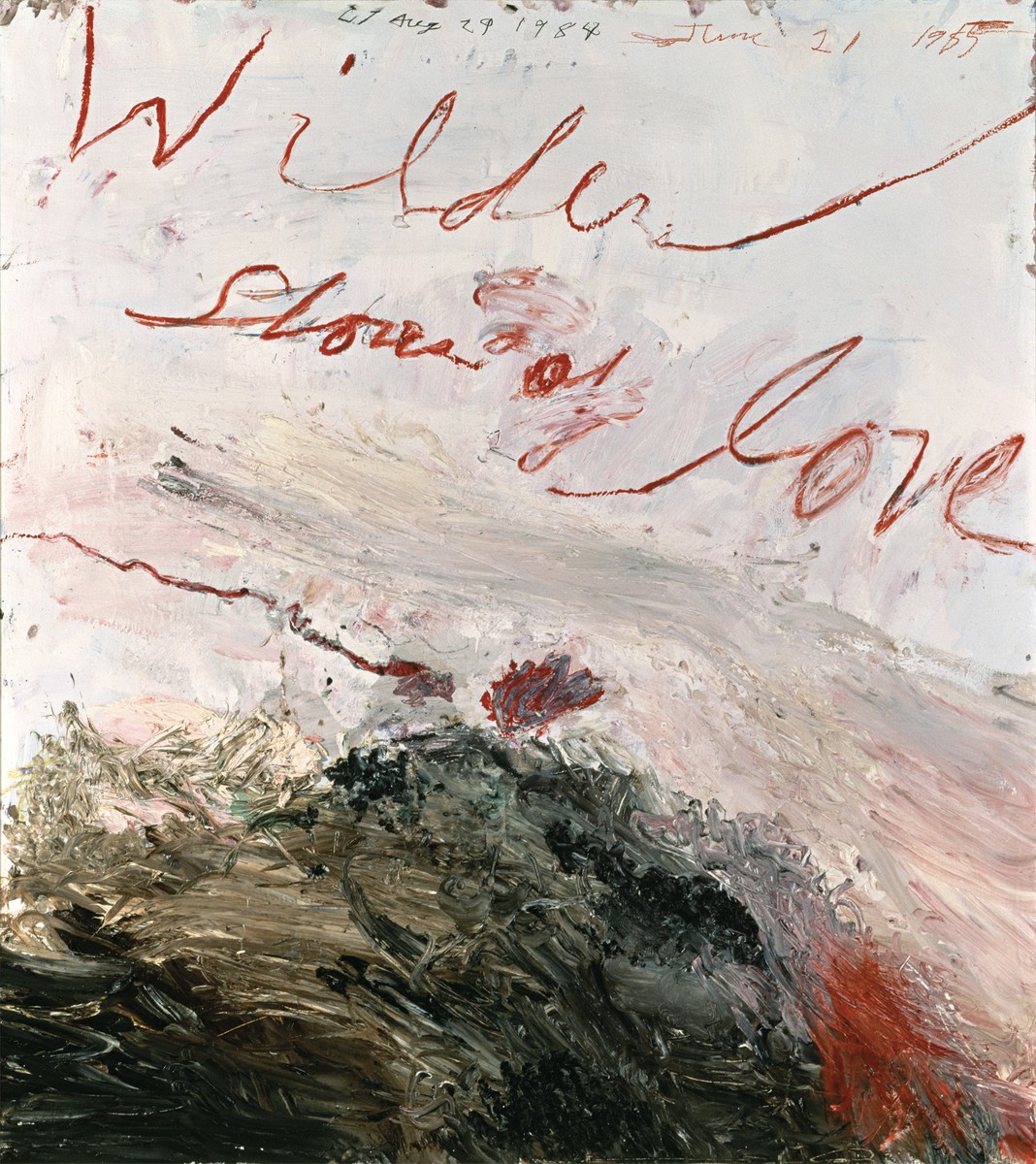
Cy Twombly, Wilder Shores of Love, 1985
[Bassano in Teverina]
Oil based house paint, oil paint [paint stick], coloured pencil, pencil on wooden panel
55 1/8 x 47 1/4 in.
© Cy Twombly Foundation
EDE – In the making process of your choreographic works you resort to the "instant composition." What does it consist of and how did you apply it to the creation of WILDER SHORES ?
mm – Instant composition is a tool which is sometimes used today in dance and choreography, though mostly during work sessions in the studio, where generally, one is closer to improvisation than instant composition. It is much less common to use this tool live on stage during a performance. I use instant composition during rehearsal to create, but also during the performance, because it gives responsibility to the dancers, which in turn confers them a stronger stage presence. There are many ways of composing “instantly”. In my work, instant composition means that the dancers will first invent movement “modules/ motifs” under my artistic and choreographic direction. Once these modules/motifs are created, I will develop a certain number of spatial, time and relational rules as to how, where and in what situation these modules can be used during the performance. In this manner, the choreography is set in its movement vocabulary as well as in its specific choreographic grid of rules, but the choice of which specific movement material will be used will depend on the situation. How, when and where on stage which module will be danced is up to the dancers. They choose, and they choose differently every day. A little like a football game: each game is different, and we don’t know what it will look like, but the rules are set, and we know we are playing football, not basketball for example. Or as if we were inventing a new language for each choreography, with its own rules concerning grammar, syntax, structure etc.
ede – Let’s talk about the syntax of WILDER SHORES. In the first part of the choreography the dancers move individually, almost as if they were islands scattered in space, giving rise to dance steps that alternate and constantly repeat themselves and then begin to meet two by two and replicate each other's movements, without ever touching. In the second part those bodies so isolated collide with each other, until they become one in the slow movements of the pas de deux and the pauses and suspensions of the dance lifts that characterize them. Through the slow increase in the dancers' movements as they gradually take possession of the space to reconfigure it by the mutual interaction and creation of ever-evolving forms, it seems you are going to trace lines and marks on an imaginary canvas. How does WILDER SHORES relate to the work of Cy Twombly in this sense?
mm – What you say about tracing lines and marks on an imaginary canvas really resonates with me, because that is exactly how I define my work: the dance space is our canvas, and, during the duration of a performance, the dancers gradually imprint traces and signs within a choreographic grid through repetition and variation. I often use a white dancefloor because quite concretely it is my blank canvas.
I often feel that my choreographies are like paintings in time and space.
In WILDER SHORES, I aimed at integrating two aspects of Twombly’s work which I perceived. On one hand, his painting contains lines, marks, poetry fragments, on the other hand it contains bundles of physical material/brushstrokes which seem to increase and release raw energy on the canvas. This dual aspect made me think of Apollo as in an intellectual erudite perception (the writings and lines) and Dionysos in a sensual, intuitive perception of life (the brushstrokes). For me, these two aspects also went hand in hand with a form of tension created by narrative fragment, and something more abstract.
My piece WILDER SHORES also works in twos and is directly related to Wilder Shores of Love, in this sense. The piece has two parts and, in each part, we build duos.
In the first part, two types of dance modules exist: the first being circular movements in the body and circular traces in space (echoing Twombly’s brushstrokes and energy bundles), the second being linear, rhythmically repetitive movements and structures (echoing Twombly’s lines and poetry fragments). Different movements belonging to these two module types are repeated in different configurations, building duos through accumulation, gradually building up energy which is released at the end of the first part of the piece, like a vortex. Pictorially speaking, this was a direct influence of Twombly’s work. I was also thinking of other works, apart from Wilder Shores of Love, such as Achilles Mourning the Death of Patroclus (1962).
In the second part, as you say, these isolated bodies come together, in what we called “love duets”, in a form of eroticism which I also strongly perceive in Twombly’s work. The slowing down of the dance heightened the sensuality and brought an almost sculptural character to this part. In this second part as well, a sensual vortex increases and disappears.
"Love duet" fromWILDER SHORES
PLAY/Michèle Murray
Fondazione Nicola Del Roscio, Rome
Video: Antonio Demma
ede – The music created for this choreography by the musician Gerome Nox, as well as the pictorial quality of the boldly colored lights conceived by Catherine Noden and the T-shirts worn by the dancers, help define the entire choreographic work. In particular, the drones that accompany the dancers' movements and the loops that repeat and emerge more and more distinctly seem to trace the transition from initial chaos to the creation of a form that slowly comes to life. Somehow you get the impression that even the music and the alternating lights become metaphors for the evolving creative process. How did you work on these elements (music, lights, costumes) in connection with WILDER SHORES?
mm – For WILDER SHORES as well as for most of my choreographies, I have a specific recurrent way of working: music, lights and to a certain extent costumes are created independently from the dance. In this sense, the dancers could technically just as well be dancing on a symphony by Beethoven for example, or with totally different light dramaturgy. No element serves the other, rather, they evolve on parallel dramaturgical lines. Each element (music, dance, lights) must have its own logical structure and composition. Once this is achieved, we put all elements together onstage, and a dialogue develops. Of course, each element is developed with the starting point of the project in mind, in this case, with Twombly’s work.
The musician Gerome Nox developed his understanding of the raw energy and sensual materiality contained in Twombly’s work to create the soundscape. For the lights, Catherine Noden and I developed the abrupt light dramaturgy, adding an element of unpredictability and violence to the dance dramaturgy, echoing the bold energy in Twombly’s work. The costumes were developed with diverse parameters; concerning the T-shirts, I wanted something sensual, the same sensuality I feel exists in Twombly’s work, hence the slight transparency of mesh which let us perceive the dancers’ skin. I also wanted something which evoked brushstrokes and colors in a contemporary pictorial manner.
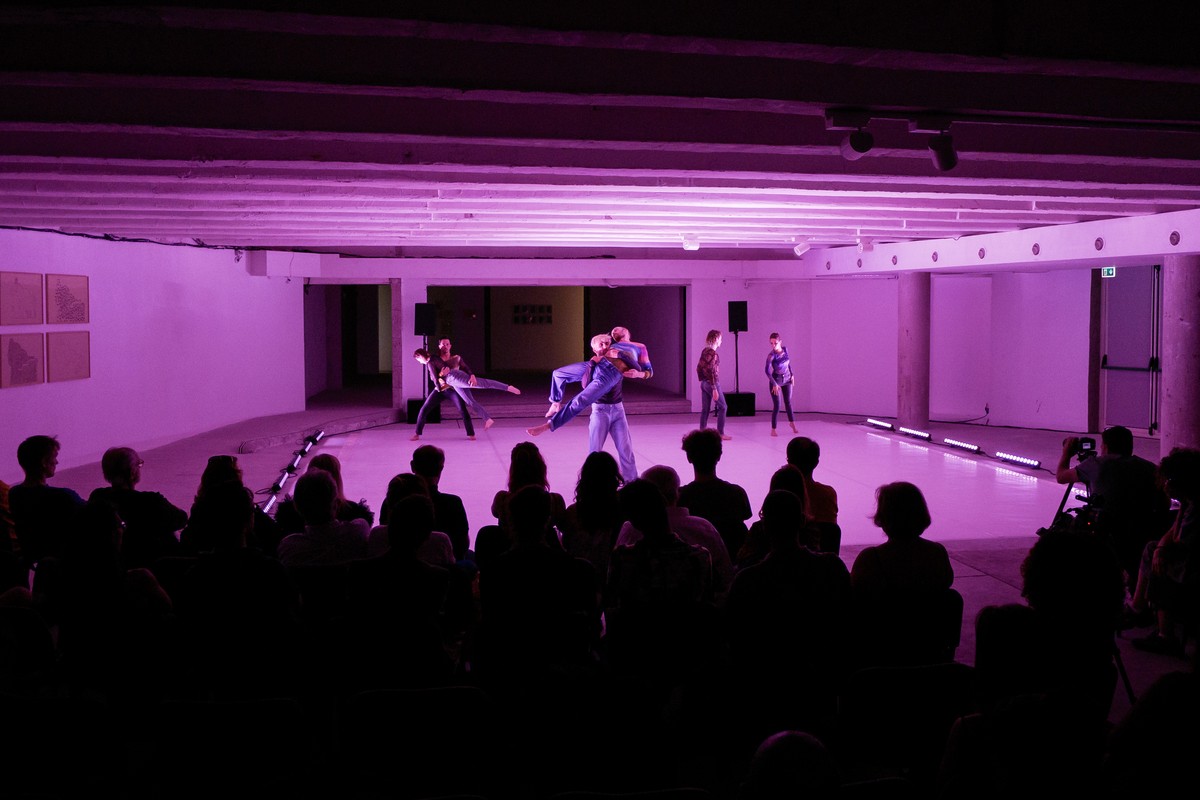
PLAY/Michèle Murray, WILDER SHORES
Fondazione Nicola Del Roscio, Rome
Ph. Livio Sapio
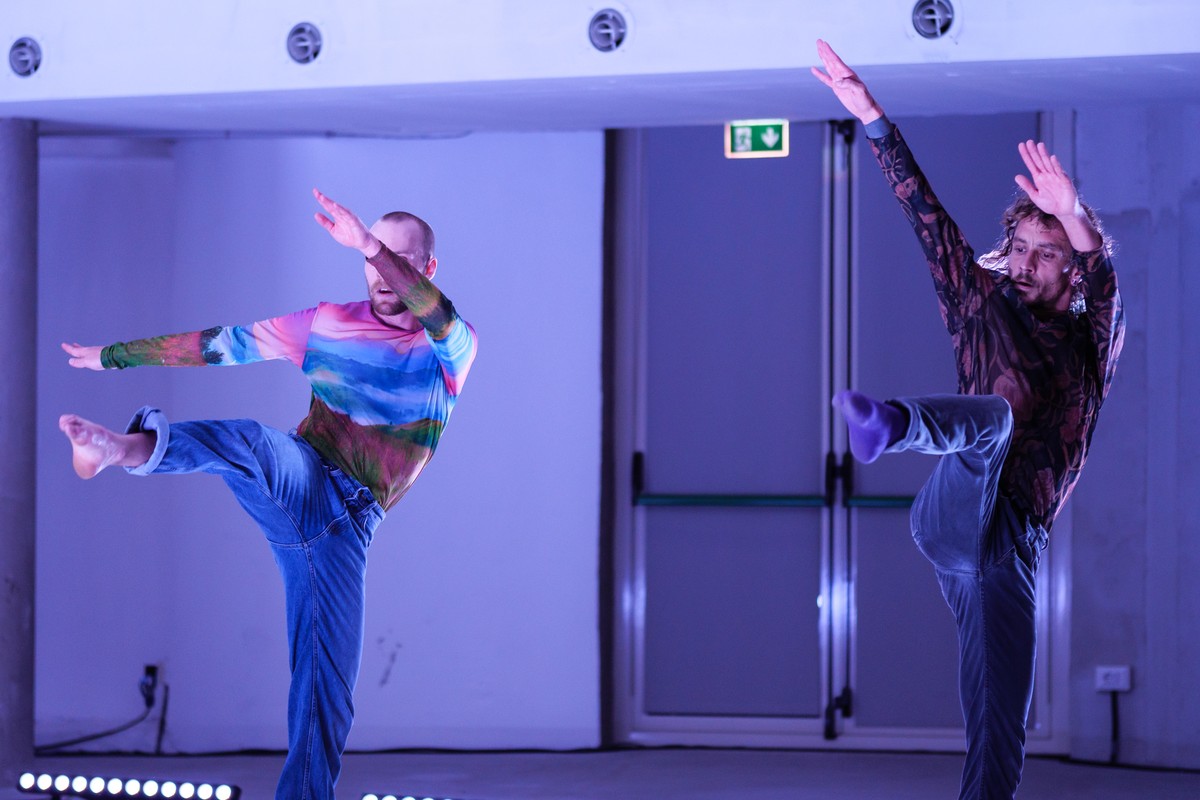
PLAY/Michèle Murray, WILDER SHORES
Fondazione Nicola Del Roscio, Rome
Ph. Livio Sapio
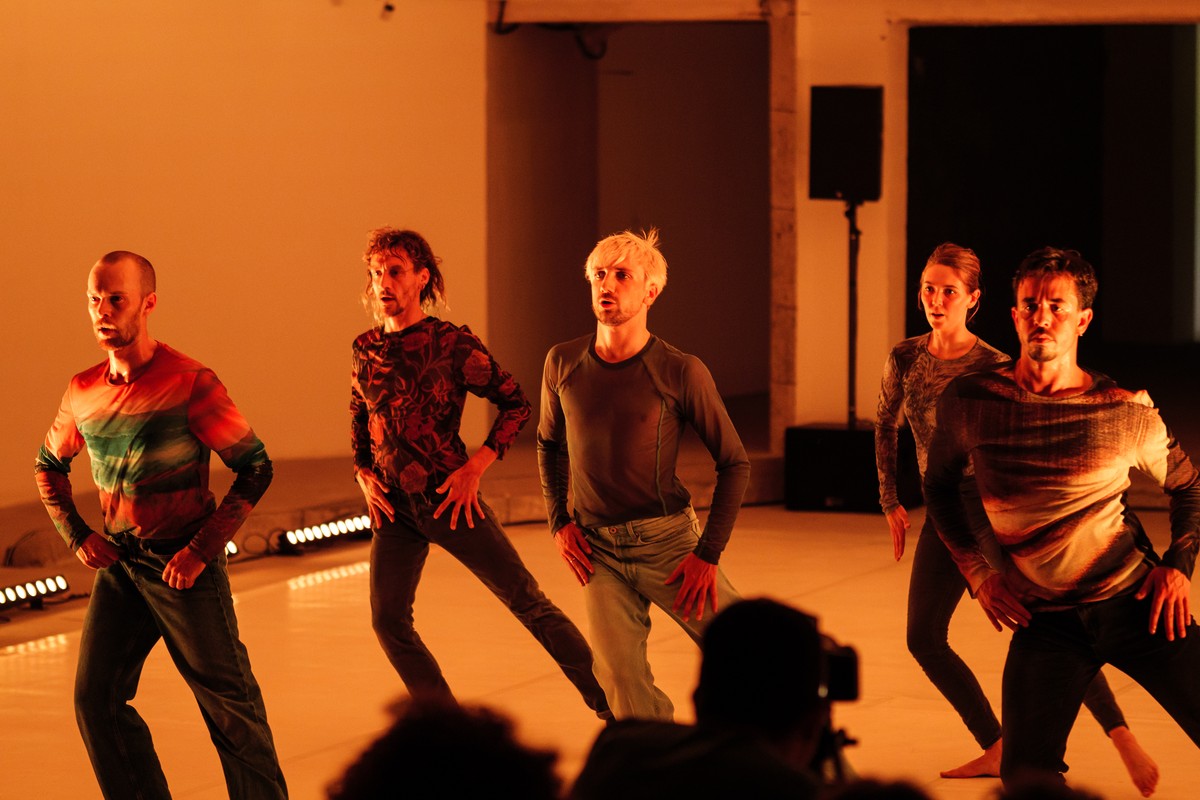
PLAY/Michèle Murray, WILDER SHORES
Fondazione Nicola Del Roscio, Rome
Ph. Livio Sapio

PLAY/Michèle Murray, WILDER SHORES
Fondazione Nicola Del Roscio, Rome
Ph. Livio Sapio
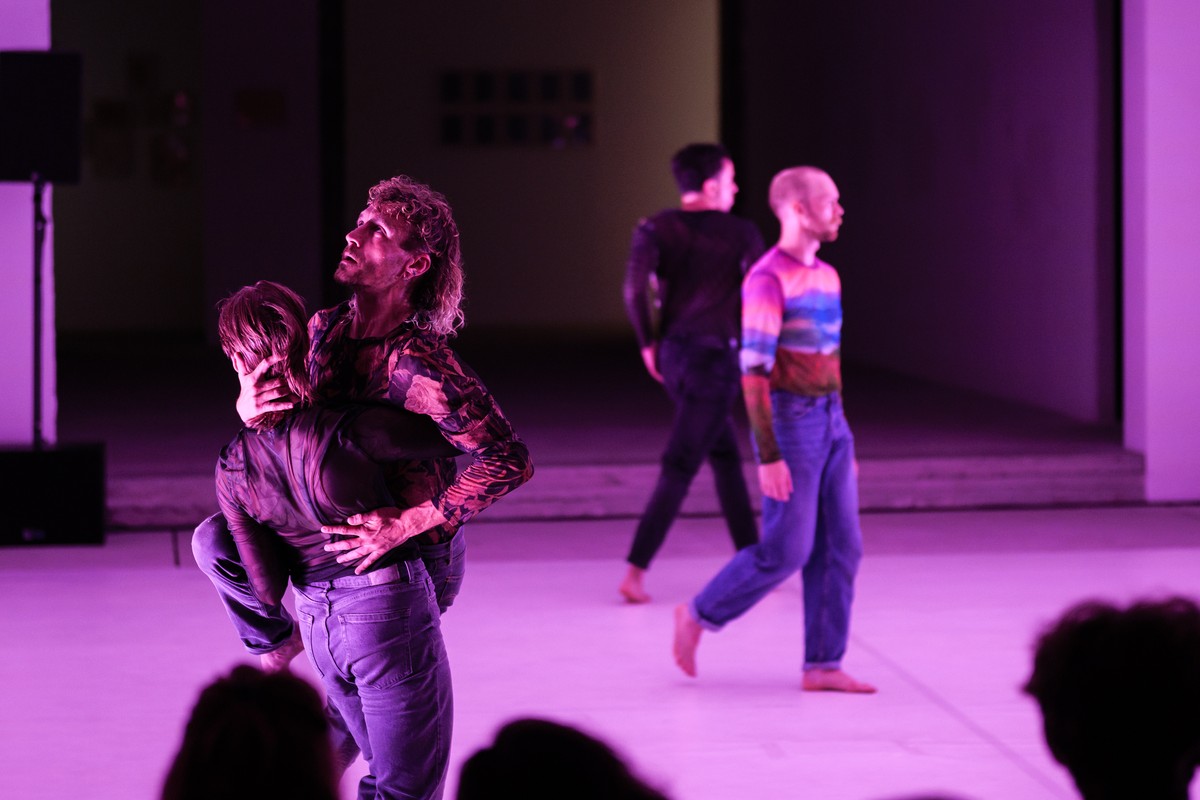
PLAY/Michèle Murray, WILDER SHORES
Fondazione Nicola Del Roscio, Rome
Ph. Livio Sapio
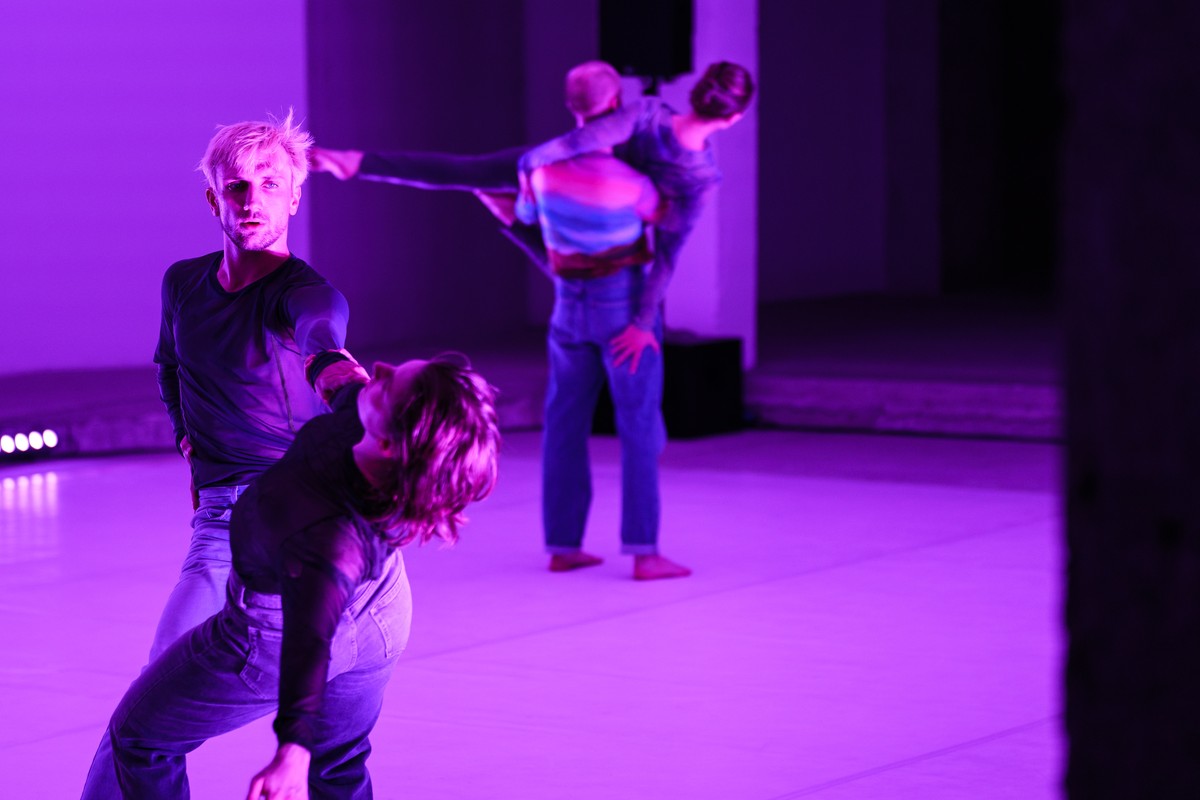
PLAY/Michèle Murray, WILDER SHORES
Fondazione Nicola Del Roscio, Rome
Ph. Livio Sapio
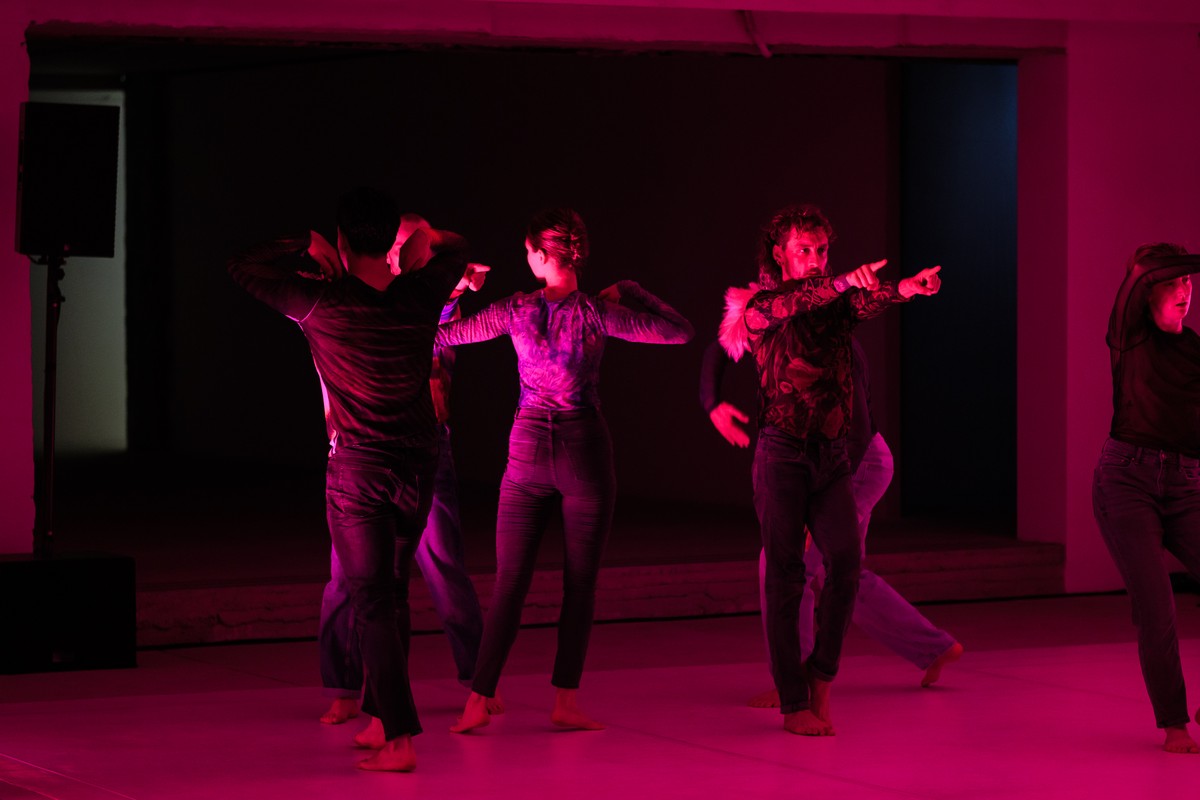
PLAY/Michèle Murray, WILDER SHORES
Fondazione Nicola Del Roscio, Rome
Ph. Livio Sapio
ede – I would like to go a step back and discuss further about your need to re-establish through your choreographies and this piece a dialogue between the past and the present. How does that dialogue develop in relation to the choreography and the work by Cy Twombly?
MM – I am very interested in the dialogue between past and present which exists in Twombly’s work. I like the fact that he draws on Greek and Roman Antiquity as well as on past poetry fragments, drawing strength and inspiration from the historical past. As I quoted before, Twombly says, “art comes from art”. In the same vein, I am also interested in Pier Paolo Pasolini’s statement “I am a force from the past”. I want to affirm the fact that my work does not come from nowhere but it is built on a formidable historical legacy from which art in general draws its strength. In WILDER SHORES, I wanted to build a choreography based on certain historically “academic” ballet movements, as well as on Merce Cunningham’s vision of space. But in applying contemporary methods, such as instant composition, as well as in working with young dancers, we bring a contemporary atmosphere to our work. We speak about how these past movements and concepts are still relevant today in an altered form, we speak about the fact that there is no progress in art, only different forms arising from different epochs. We speak out from our time, but we build on the past.
ede – In dance, the evolution of movement in space, the rhythm that marks and defines it are fundamental elements in the making of a choreography. They both remind me of some Twombly's works that tell the fulfillment of a gesture in the succession of spirals on the canvas (Blackboard paintings) or that through the development of a work in parts redraw space in time (I am thinking for example of the cycles Fifty Days at Iliam, 1978 and Lepanto, 2001). When you make a choreography how do you deal with the concept of space and time? How much and how does the space in which you enact the choreography influence its creation?
mm – Generally, my work puts questions about time and space at the core of each dance. Each choreography we create is an opportunity to play with time and space differently, and these different approaches confer a unique and specific atmosphere to each work. I try to develop time and spatial concepts which will allow the audience to experience space and time differently in each piece.
The space in which we create has a moderate influence, because we usually work in dance studios which have approximately the same dimensions. Of course, different types of theater venues will have an influence on a performance, and sometimes new ideas appear as an answer to the spatial situation of a particular venue.
In the case of our performance of WILDER SHORES at the Fondazione Nicola Del Roscio, the specific gallery space had a fascinating effect on the choreography, because the energy radiating from the dancers’ movements seemed to be compressed by the low ceiling. Because of this, the dancers directed the energy outwards on a more horizontal plane, whereas in a typical theater space, part of this energy would have been directed upwards. This way of dealing with movement direction and address somehow influenced the performance in a very interesting manner.
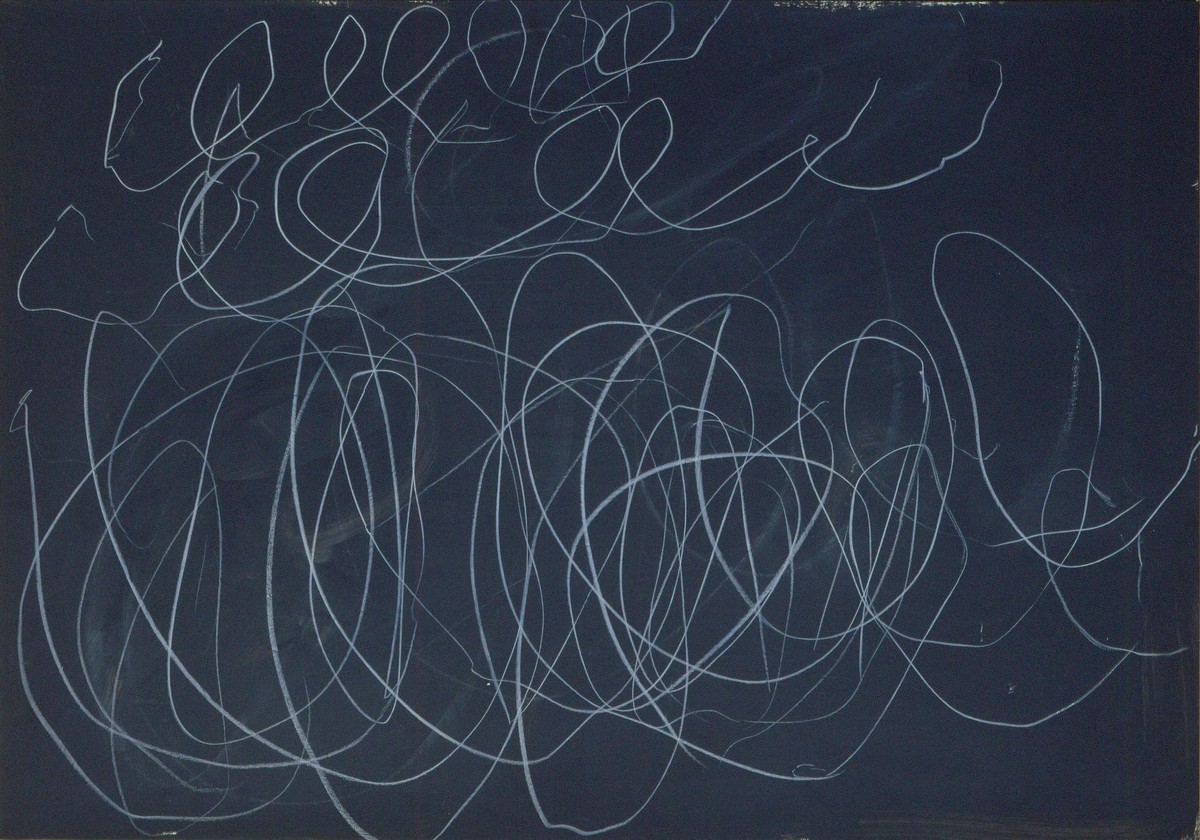
Cy Twombly, Untitled, 1970
[Rome]
Oil paint, wax crayon on paper
27 3/4 x 39 3/8 in.
© Cy Twombly Foundation
ede – Talking about space and the influence it has on a performance, you often find yourself devising choreography for not only theatrical spaces, but also for museum and exhibition spaces. Can you tell me more about your way to work in connection with different kind of places and spaces?
mm – For this venue, the choreography we performed was not altered nor adapted in any way (except for what I explained, answering your former question). I didn’t feel any necessity for alteration, because we had the possibility of a stage-like space in the Fondazione location, and besides, as the choreography of WILDER SHORES was originally influenced by Twombly’s work, it seemed as if everything I wanted to convey for the Fondazione Nicola Del Roscio was already in the piece.
Concerning my work in general, I have always felt very close to painting and sculpture, and I consider that my work has certain similarities and affinities with pictorial art, both because I am often influenced by this art form, but also because the way I create choreography feels close to art. As I already explained, I generally use a white stage floor as a canvas for movement, but also for lights. And my graphic choreography generally doesn’t have a classical dramaturgical buildup but functions rather like a painting in which, like with brushstrokes, successive repeated movement gradually imprints a sensation of the body and an image in the eye of the audience.
Since 2021, I have been creating two types of choreographic works, one specifically devised for the stage (or similar locations such as the Fondazione), the other specifically devised for the museum space. Stage and museum conventions and histories are inherently very different and I find that transferring a stage work to the museum space and vice versa is often disappointing. I am much more interested in finding out in what ways choreography can express itself in a museum space, specifically using the museum’s convention (experience of time and space are fundamentally different). In 2021 I created DUOS / COLLISIONS AND COMBUSTIONS and I am currently working on LIFE OF FORMS for 2025; both projects are specifically created for the museum space.
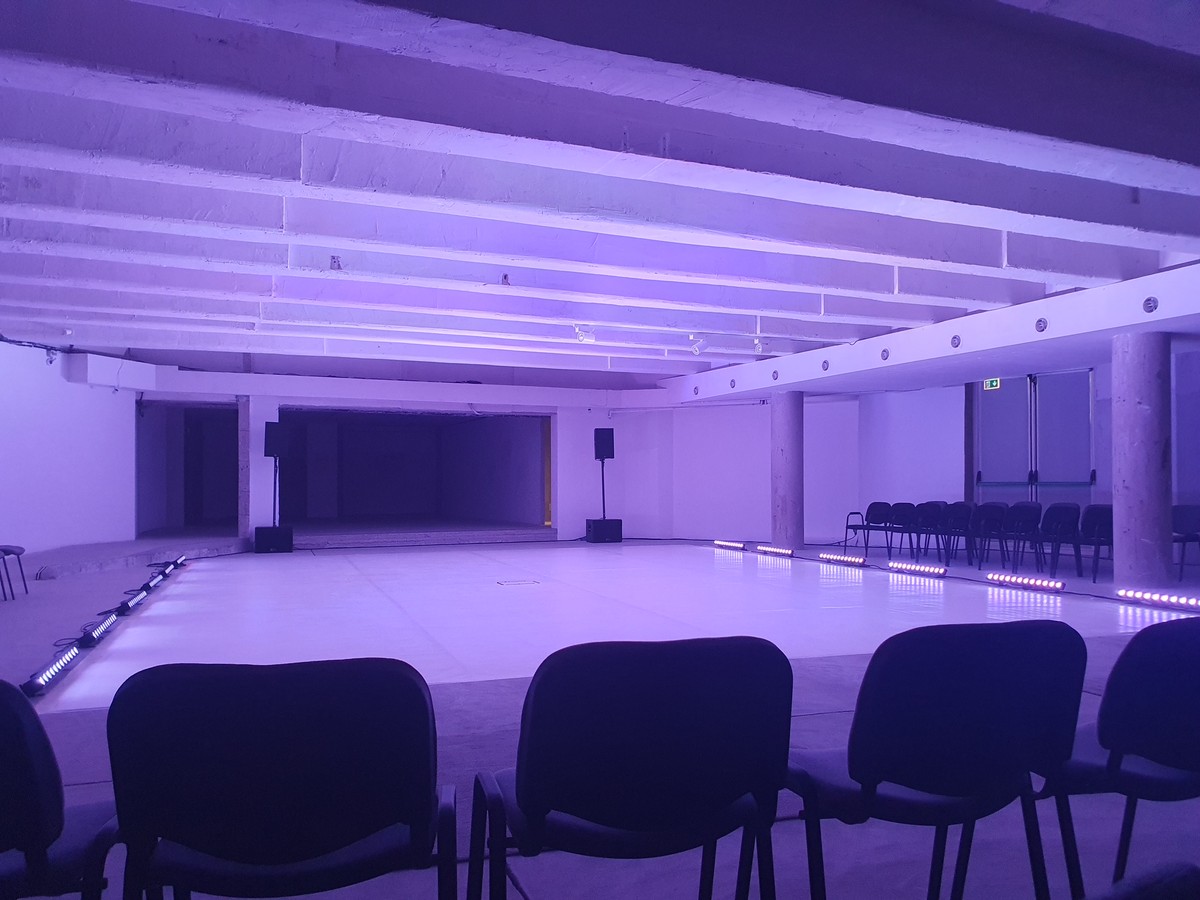
WILDER SHORES, dancefloor installation view
Fondazione Nicola Del Roscio, Rome
Ph. Eleonora Di Erasmo
PLAY, a live art and dance company directed by Michèle Murray, brings artists with common artistic interests together, dealing with the body, movement and choreography.
Often linked to other art forms such as music, art, literature or fashion, the artistic research results in choreographies and live art performances for theaters, museums and other spaces.